Getting started playing piano
Learning piano is more than just great fun. It’s been proven by scientists and psychologists to sharpen your mind, lift your mood and hone your dexterity.
Learning piano is more than just great fun. It’s been proven by scientists and psychologists to sharpen your mind, lift your mood and hone your dexterity.
The best bit? Whether you’re an absolute beginner or modern Mozart, you’ll benefit from the first day you play. That’s why the opportunity to learn should be available to everyone.

How to start learning piano
How do you start learning piano? Well, there’s a few key decisions to make. First of all, will you choose a traditional piano or a digital piano or keyboard? And once you’ve chosen your instrument, how will you approach learning piano? It’s essential that you find the right way to learn so that you stay motivated and stick with it. For some, this means finding a private teacher for weekly in-person lessons. For others, digital learning via an app-based solution or YouTube is more appealing due to the flexibility it provides.
Many beginners make the mistake of jumping into playing without taking the time to learn proper technique and form. Before you start playing, it's important to have an understanding of basic music theory as well as piano fingering and posture.
Before you begin, it is also a good idea to set a learning objective and make a realistic practice schedule that you can stick to. It's important to take the time to practice regularly.
Memorizing pieces and developing muscle memory is key to mastering the piano. Start by playing simple exercises, such as scales or arpeggios, and slowly work your way up to more advanced pieces of music. This will help you to stay motivated and to feel that you are making the desired progress.
Finally, be patient with yourself! Learning how to play the piano is a long process that requires dedication.

Choosing your instrument — everything you need to know about buying a piano or keyboard
If you're trying to decide between an acoustic traditional piano and an electric keyboard, there are a few things you should consider. Size and space are important factors, especially if you don't have a lot of room in your home or studio. A traditional piano is a big commitment as it takes up a large amount of room. Electric keyboards are usually smaller and more compact than traditional pianos, so they may be a better option if you're short on space and want to be able to pack your instrument away easily. Some electric keyboards such as LUMI Keys are super portable which means that you can take them with you when you travel.
Sound is another important factor to consider when choosing between an acoustic and electric keyboard. Traditional pianos produce a richer, fuller sound than most electric keyboards, while electric keyboards can offer more customizable tones and effects. If you select an electric keyboard which is MIDI enabled - such as LUMI - then you open up an entire world of creativity as you can use it to write your own songs or tracks with a program such as GarageBand or Logic.
The touch of the keys is also something to think about. Traditional acoustic pianos have weighted keys, which means they require more force to press down. This can be beneficial for developing proper technique, but some players prefer the lighter touch of an electric keyboard. Some electric keyboards come with weighted keys which brilliantly mimic the feel of a traditional piano.
Finally, budget is always a consideration when making a big purchase like this. Acoustic pianos are generally more expensive than electric keyboards, but there are a wide range of options available in both categories to suit a variety of budgets.
No matter which type of instrument you choose, it's important to take the time to explore your options and make sure you're getting the best value for your money. With the right research, you'll be able to find an instrument that perfectly suits your needs.
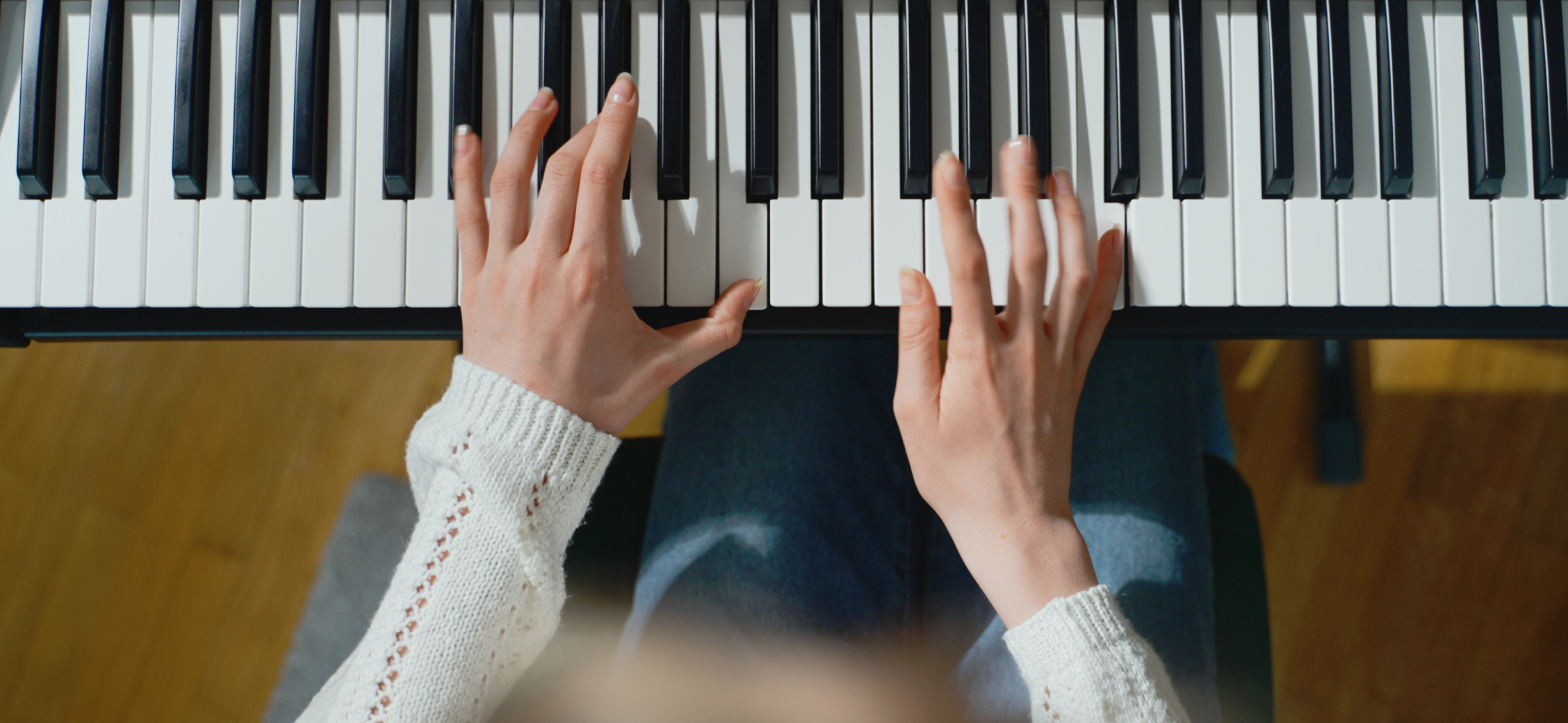
Traditional piano
Choosing the right piano for your home or studio is an important decision. While a good quality piano can be expensive, it should not be viewed as a one-time purchase. A well-maintained instrument may last for decades, so choose wisely.
When selecting a piano, consider the following factors:
Size: The size of the piano is an important consideration. Grand pianos tend to produce a richer sound and are ideal for larger spaces, while upright pianos are more compact and may be better suited for smaller rooms.
Keyboard: Piano keyboards come in two varieties – acoustic or digital. Acoustic pianos use hammers that strike strings inside the instrument to produce the sound, while digital pianos use electronic components such as transducers and amplifiers.
Cost: Piano prices can vary greatly depending on the type, size, and quality of the instrument. While acoustic pianos tend to be more expensive than digital varieties, they may also offer a better overall sound.
Maintenance: Piano maintenance is an important part of ownership. Regular tuning and repairs can help ensure the instrument's longevity, so be sure to factor in the cost of upkeep when making your purchase decision.
Finally, if can be a good idea to try out different instruments before deciding which one to buy. By doing this, you can find a piano that best suits your needs and budget. With the right research and selection process, you can find a high-quality instrument that will bring years of enjoyment to you or your family.
undefined
Digital piano / keyboard
When it comes to choosing a digital piano, there are a few things you should consider. First, you'll need to think about the size and number of keys on the instrument. Generally speaking, 24-key models will be the most compact option while 88-key models provide the full range of notes that acoustic pianos do. You'll also need to consider the amount of space you have available to set up a digital piano. If you are short on space, the 24-key models should provide enough range for most players, while still taking up much less room than their larger counterparts.
Next, you'll want to think about the number of sounds and the quality of those sounds that the digital piano is capable of producing. Many instruments come with a variety of different sound banks to choose from, so you can find one that suits your needs and tastes. Additionally, some digital pianos offer more realistic or professionally recorded sounds than others, so if sound quality is important to you, it's worth researching the options before making a purchase.
MIDI capability is also an important factor for many players. MIDI stands for Musical Instrument Digital Interface and is essentially a protocol that allows digital instruments to communicate with computers and other devices, such as sequencers, drum machines, and synthesizers. Most modern digital pianos have built-in MIDI capabilities, but it’s worth double-checking before making your purchase.
Another thing to consider is the touch of the keys. Weighted keys are becoming increasingly popular in digital pianos as they provide a more realistic feel than unweighted keys. If you have the opportunity to play on both types of instruments, it’s worth trying them out to see which you prefer.
Finally, you may want to consider the extras that come with your digital piano. Many instruments come with a keyboard stand, pedal and other accessories. If these items are important to you, make sure they are included in the package before making a purchase.
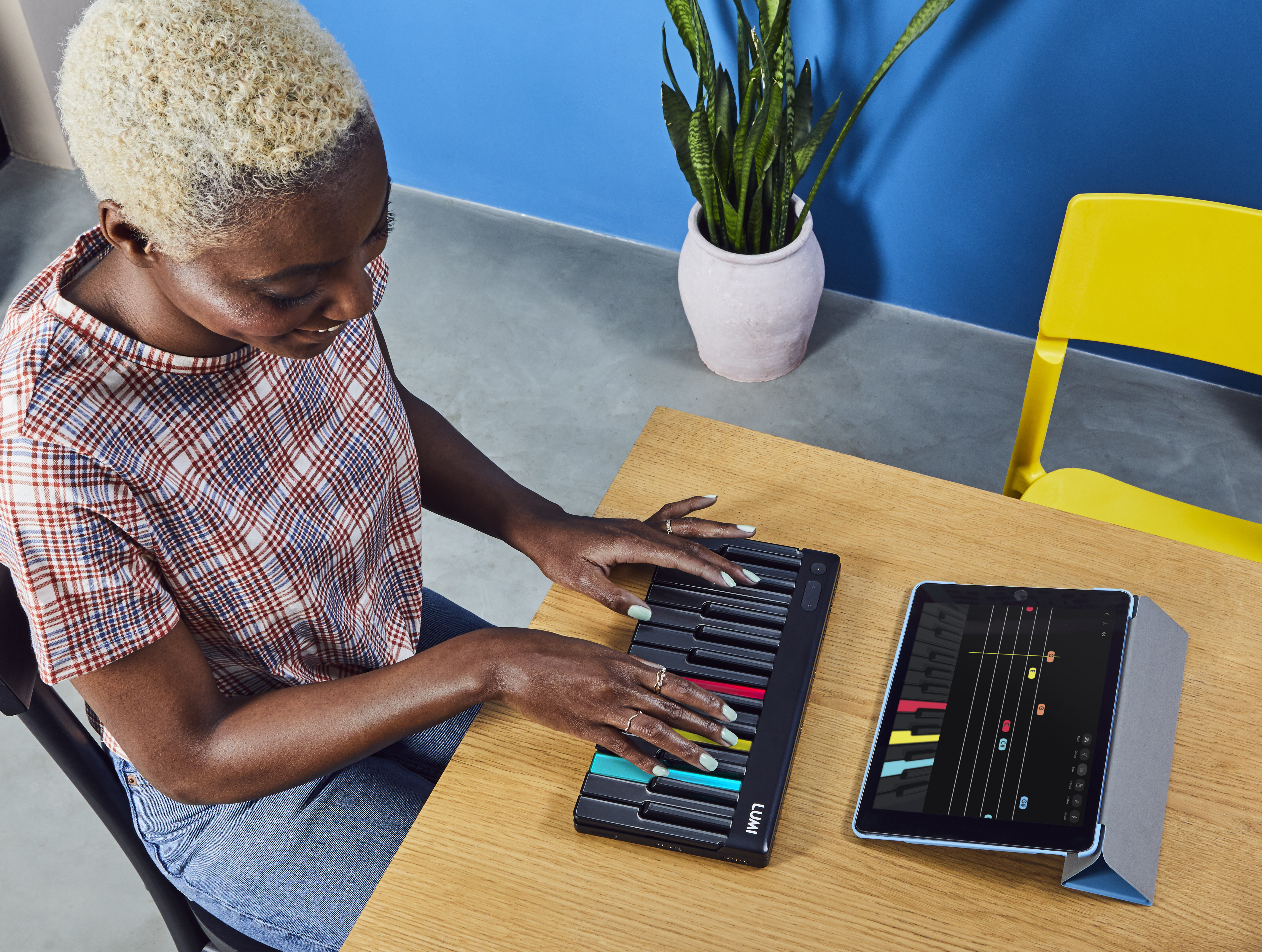
A fully integrated system
If you’re looking for a fun and easy way to learn piano, then you may want to consider an integrated system such as LUMI. It is the first all-in-one music learning system of its kind combining a glowing keyboard, app and ever-expanding library of songs, lessons, exercises and games.
The award-winning LUMI Keys is a beautifully colourful light-up keyboard designed to help you learn piano with Brightkey Technology delivering RGB light to shine from every key. With groundbreaking technology, LUMI brings Fresnel-lense design, typically used in lighthouses, to keyboards for the first time.
LUMI is expandable too so you can snap on a second keyboard to increase your playing surface to 48 keys. It’s also fully portable and wireless so you’re able to take your music making with you and there’s no excuses for not keeping up with your practice.
undefined
undefined
Things to consider when choosing an instrument
Space - how much room do you have? Sound - would you like a range of sounds? MIDI - do you want to have the option of creating your own tracks?
Portability - do you want to be able to take it with you when you travel?
Touch - do you want weighted keys?
Pedal - do you want a pedal?
Things you may need:
Music Stand
Stool
Keyboard Stand
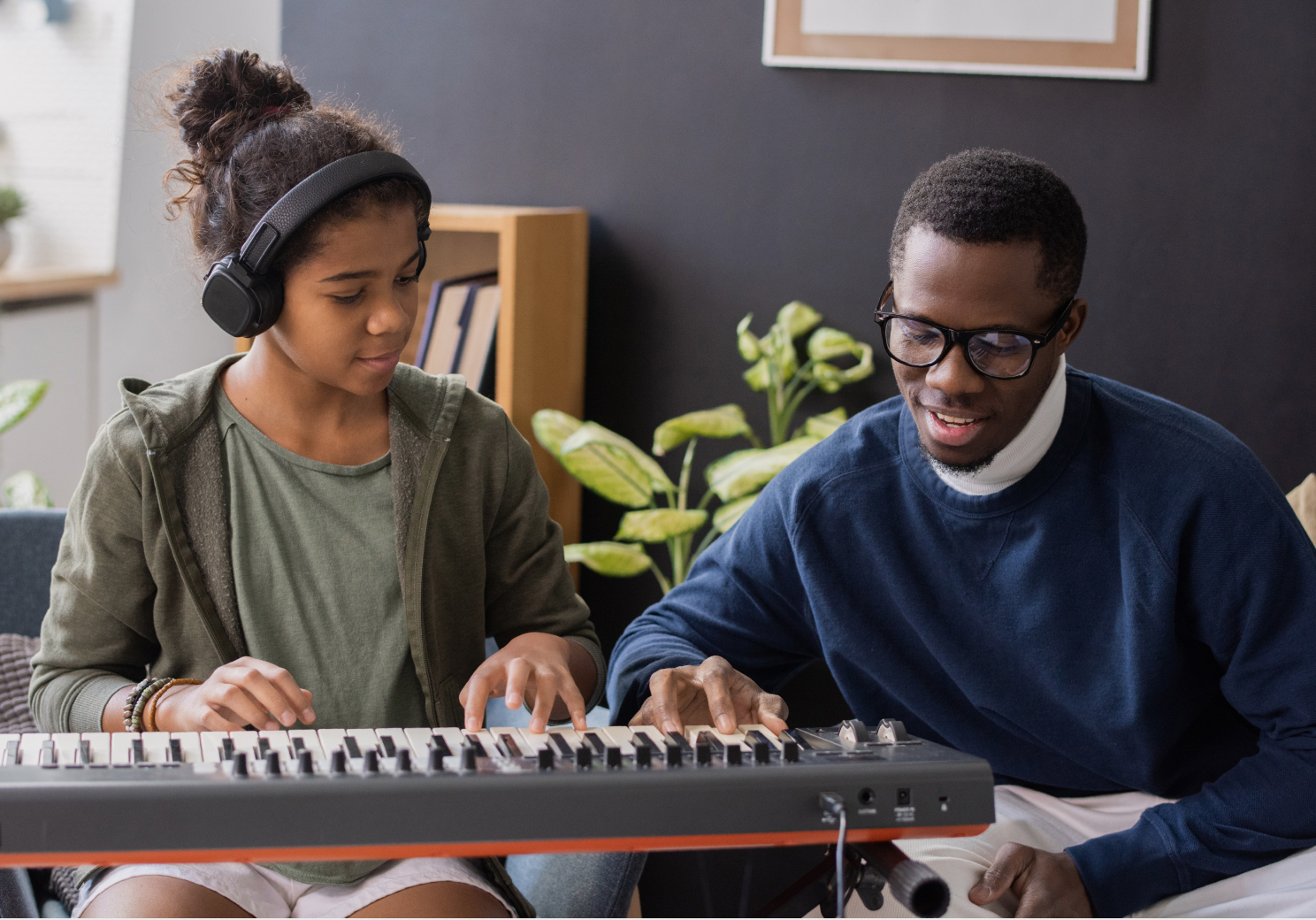
Deciding how to learn - a complete guide to piano methods
When it comes to learning piano, there are several options available. One of the most traditional approaches is one-to-one lessons with a teacher. This approach gives a student access to an experienced musician who has in-depth knowledge about the instrument and can offer personalized guidance according to their individual needs. Furthermore, practising with a qualified instructor will help a student develop good habits which are essential for making progress.
An alternative option is self teaching, which requires dedication and commitment from the learner as well as having good sources of material or guidance such as books or online courses. Although this route may be more challenging and time consuming without an instructor's feedback, it can be much cheaper than hiring a private tutor and allows learners to learn at their own pace.
Digital app lessons are also becoming increasingly popular due to their convenience and interactive nature. These apps are often tailored towards specific goals, such as learning chords or mastering a particular song, and can offer feedback on technical details such as tempo and articulation. However, these apps may lack the personal touch of an instructor and don't always cover topics in as much detail.
YouTube is a great source for free content where users can access tutorials from musicians all over the world. However, this content varies in quality so it’s important to select reliable sources with good teaching standards. Although there's no personal interaction with instructors, learners can easily ask questions or leave comments under each video which can be answered by the creator or other users. Self-guided learning with YouTube can be frustrating as it can be difficult to know where to start and how best to progress.
Finally, ROLI offers a fully integrated experience with video lessons, songs, exercises and games that sync with your light-up Piano M keyboard. With a ROLI keyboard connected to the ROLI Learn app, you’ll be able to access hundreds of bite-size, interactive lessons. They're all led by friendly coaches and designed to help you quickly pick up piano skills and musical knowledge. ROLI Learn allows visual learners to dive right in without knowledge of music theory. No piano teacher can be around to give feedback all the time but with ROLI Learn you can receive instant feedback on how you’re doing. Find out more about the ROLI method.
At the heart of ROLI Learn is a structured curriculum designed to help you take your very first steps as a musician. It’s fun and instantly rewarding. Plus the ROLI Learn app is designed to keep you motivated with personalised suggestions and targets for your daily practice routine. ROLI's brilliant library of songs, from classical and pop to rock and more, will keep you engaged as it goes far beyond traditional exam pieces.
Each approach to learning the piano has its own positives and negatives, but ultimately it depends on a person’s individual needs and preferences which option works best for them. Ultimately, no matter what route a student takes in learning how to play the piano, practice and dedication are essential for progress. With enough determination and motivation, anyone can learn to play songs that they love on the piano.
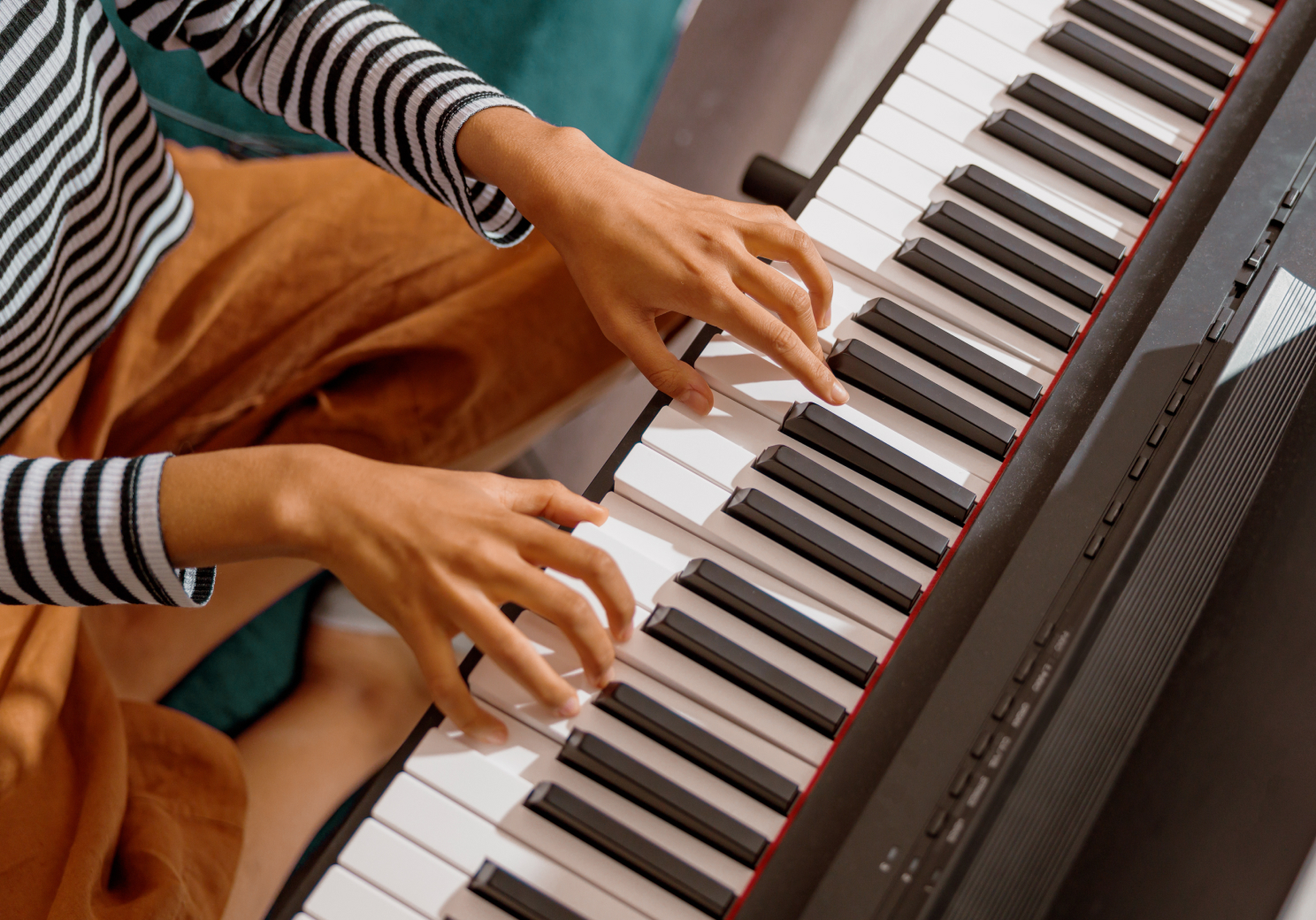
Technique essentials - top piano techniques that you need to know
When you start learning piano, it’s essential to get the basics right as good technique will set you up for success. Unlearning bad habits can take a while and be very frustrating.
The top piano techniques that you need to learn are —
Hand position - keep your hand in a relaxed but curved position as if you’re holding a tiny fragile mouse in your fist.
Wrist position - it’s important to play with flat wrists and not to let your wrists droop. Flat wrists will mean that you are able to achieve a really solid consistent sound. It will also support your dexterity when you come to play faster pieces with more notes.
Lower body position - sit or perch on the edge of your stool or chair with your elbows at the same height as the keyboard.
Foot position - have your feet firmly on the ground so that you have a really solid shape. Later on you may need to comfortably lift your feet to use the pedals.
Upper body position - it’s important to keep your spine really straight and your shoulders nice and relaxed. It may just be your fingers that touch the piano but amazingly the position of your whole body has an impact on the quality of the sound you can make and also on the ease with which you can move over the keys
Finger shape - perhaps the most common mistakes that beginner pianists make are related to finger shape. Be careful that you don’t fall for one of these pitfalls. Avoid the tendency to tuck your thumb into your fist - one of we keep it nice and relaxed and ready to play the piano. Similarly, don’t crunch up or tense your little finger or let it become too flat - it needs to be nicely curved, relaxed and ready to play!
Key technique - the way that your fingers strike the keys makes a big difference to the sound that you make. Use your fingertips to strike the keys and be sure to keep your fingers strong without collapsing them. This may seem tricky at first but the more you practice the stronger your fingers will become. This is why scales and exercises are an important part of your daily routine as they help to build core strength in your fingers.
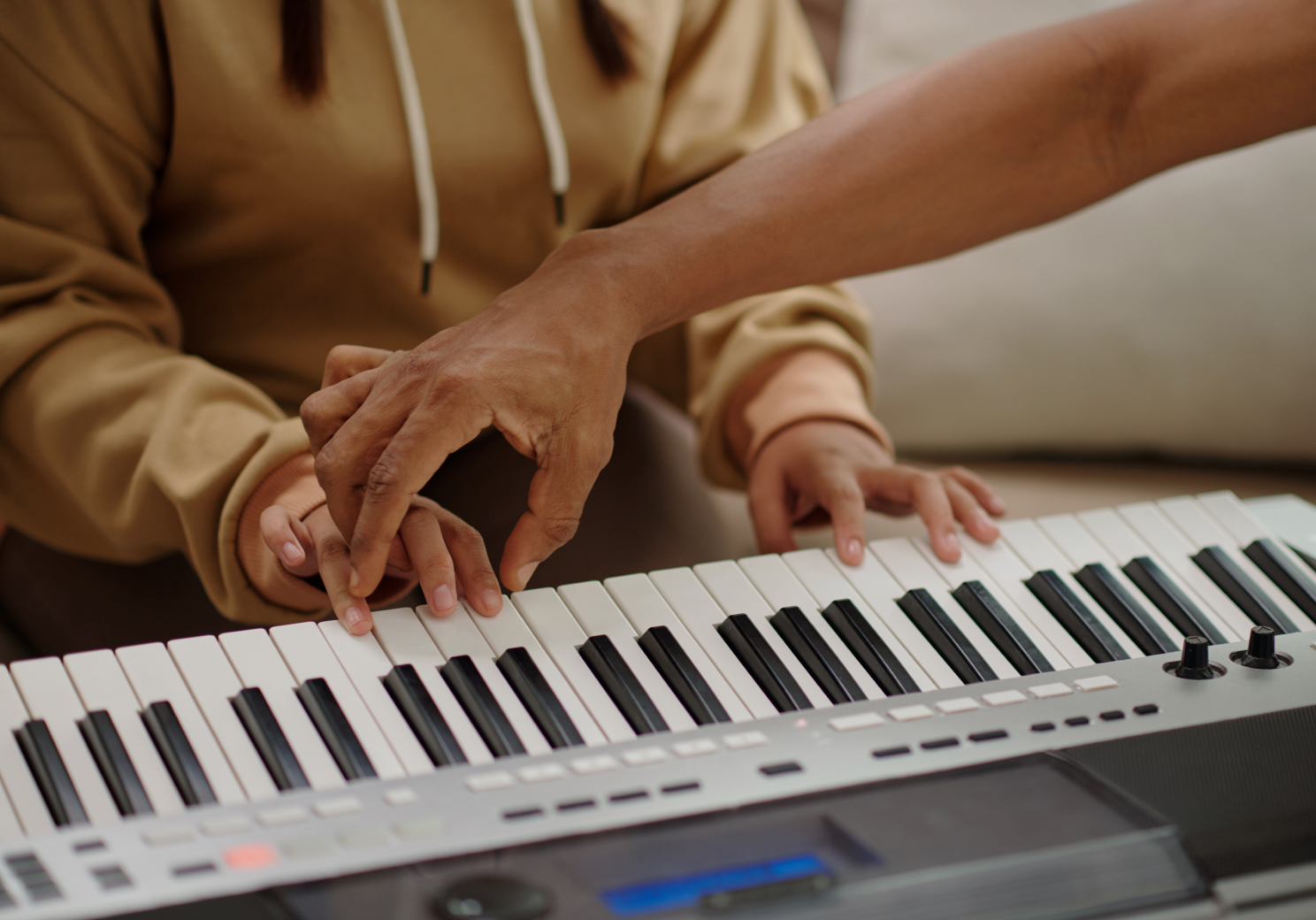
Common beginner mistakes to avoid
One of the most common beginner mistakes when learning piano is not listening to the song. Without listening to the song, it is difficult to get properly acclimated to what you are playing. Additionally, not listening to your own playing can lead to bad habits forming.
Another common mistake is not practising regularly enough or having incorrect/ineffective practice routines. This can manifest in lots of stopping and starting, getting lost whilst playing, performance anxiety, and loss of focus.
Poor rhythm is also a frequent issue for beginners. This can be caused by practising too fast or without a metronome.
Incorrect hand position is another major mistake made by beginners. This includes flat fingers, tense fingers, low wrists, not using arm weight, flying pinkie, and tucked in thumb. Taking hands away from keys between notes is another related problem.
Incorrect/inefficient fingering can cause errors to arise when playing the piano. It is important to learn accurate fingering for different chords and scales in order to progress smoothly as a pianist. It is worth investing in mastering this skill early on as it will enable you to play more technically challenging pieces as you progress.
Many beginners play without dynamics or expression. This means they play at one single volume with no variation or play too loud or too quiet. This means their playing lacks interest and can feel quite monotonous and unmusical.
It can be hard to master hand-eye independence. If you’re learning to read sheet music, eventually you want to be able to do this without looking at the keys at all. For beginners this is very hard to master and many will find themselves looking at the keys too much.
Another key coordination skill is left hand / right hand independence meaning that you need to be able to play different notes and rhythms with each hand. This can take a while to master and requires dedicated focused practice.
A final pitfall to watch out for are general postural issues, such as sitting hunched and tense, sitting too close or too far away from the piano, with a seat that is either too high or too low. Feet need to be engaged and arms should be tucked in and relaxed with shoulders loose and low.
By avoiding these common mistakes when learning the piano, beginners will be able to improve their playing more quickly and easily. With practice, they will be able to master the instrument with confidence.
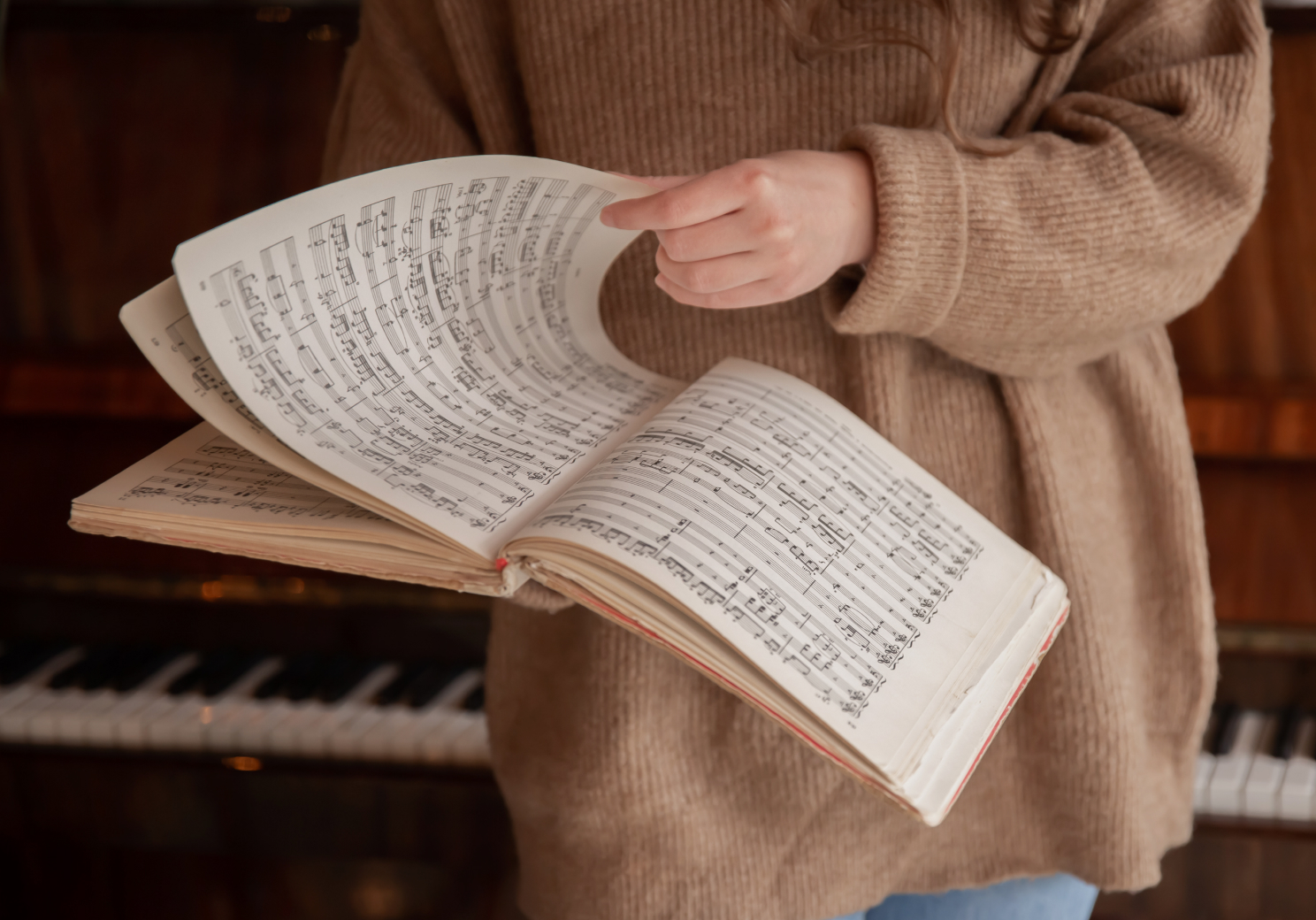
Deciding what to play - start with a song you love
When you're struggling with how to start learning piano, some traditional methods it can feel like it takes a long time and many weeks and months of practice before you’re playing music that you really like.
In order to stay motivated it’s a great idea to start playing music that you love as soon as possible. With A ROLI Learn Membership, you’ll have access to hundreds of songs which means you’ll be able to start playing music that you want to play right away.
undefined
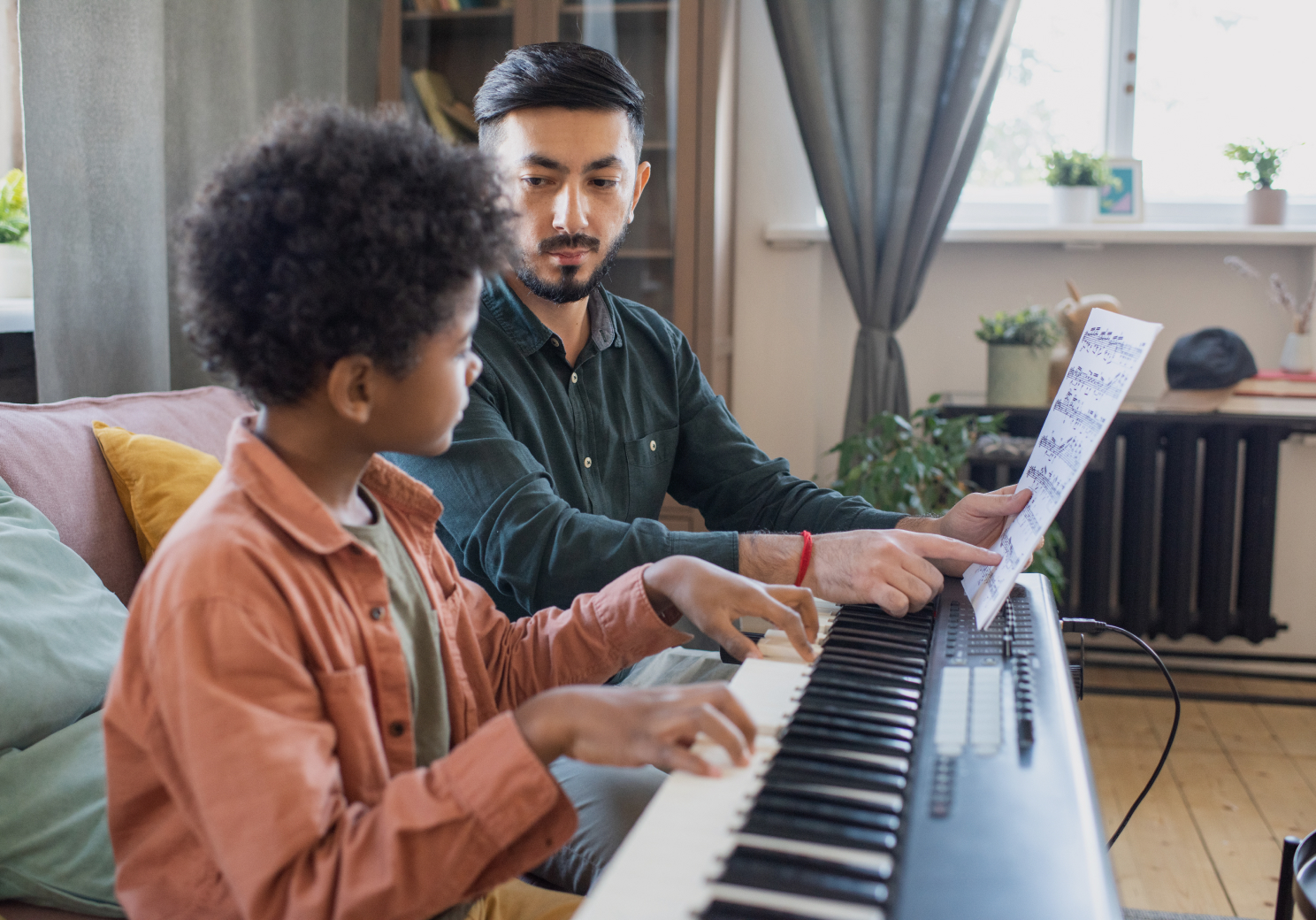
To read or not to read - an introduction to sheet music
Whether you learn to read sheet music or not depends a bit on your piano playing goals.
For those who want to play classical music, learning to read sheet music is an essential skill. Sheet music provides an in-depth look into the arrangement and structure of a piece, allowing the pianist to understand how the elements can come together to create a full composition. By understanding the notation on a page, you will also be able to better interpret and understand the emotional context of a piece, which will help you to play with more finesse and expression.
For those who are interested in playing popular music or other genres, learning to read sheet music can be beneficial but is far from essential. It can help to give you an overall understanding of how different musical elements work together and can provide a useful reference point when learning new pieces. But for non-classical genres, the freedom of playing without sheet music can also be extremely positive.
In short, whether or not you choose to learn to read sheet music is up to you and the goals you have for your piano playing. But either way, it can be a useful tool to help you improve your skill and become a better musician.
undefined
Benefits of reading sheet music
Learning to read sheet music can be incredibly beneficial for musicians of all experience levels. For beginners, it can be helpful in order to understand the basics of musical theory and how to apply it in practice. It can provide a great foundation for learning tunes and improvisation, and even facilitate composition.
For more advanced players, reading sheet music is an invaluable skill that can help open up a world of possibilities. It can provide access to a wider range of musical styles and repertoires, as well as enabling more detailed analysis of the music itself. Being able to read sheet music can facilitate collaboration between musicians.
undefined
Reading sheet music is far from essential
There are many ways to learn an instrument without being able to read sheet music, such as playing by ear, following tabs or using interactive light-guided systems (such as LUMI).
In fact, reading sheet music can actually be a hindrance to learning an instrument. Many musicians will tell you that sheet music can provide a false sense of security that prevents them from exploring the more creative aspects of playing. Instead, they become too focused on reading and interpreting the notes on the page, instead of creating and expressing their own music.
If you are already familiar with some basic music theory, you can start off by learning some chords and scales. This way, you will be able to understand what the notes on the sheet music are referring to, even if you can't yet read them. You can also learn how to play songs by ear or using tabs, which often allows for more creative freedom than trying to read sheet music.
If you opt for LUMI’s unique integrated system, then you can use the colourful light up keys to help you to learn the notes. The LUMI app includes four different playing views depending on how you’d like to play and learn. You can simply follow the lights or if you want to learn sheet music, you can let LUMI show you the way.
Ultimately, the choice is yours! If reading sheet music is something that appeals to you and that you would like to learn, then by all means go for it. But if it doesn't seem necessary, feel free to explore other ways of learning your instrument and creating music. You may find that you don't need to read sheet music after all.
Whichever you choose, remember that the most important thing is to have fun and enjoy playing your instrument! Even if you don't learn how to read sheet music, it doesn't mean you won't be able to create beautiful music. So go ahead and explore – who knows what musical wonders will await.

How do you get to Carnegie Hall? The essential guide to piano practice
undefined
There’s a famous saying in music circles - how do you get to Carnegie Hall? Practice practice practice. Whether you have lofty ambitions or want to be able to play a favourite song for friends and family, the best way to guarantee that you master the piano is regular practice. This may sound like a big commitment but as little as ten minutes practice a day can set you up for success.
When learning piano, regular practice is essential for any player who wants to progress and become a proficient musician. Not only does regular practice help you develop your technique, but it also allows you to learn new pieces of music, understand complex concepts, and enhance your overall musical knowledge. Additionally, regular piano practice can have a positive influence on your self-confidence as you become more comfortable with playing the instrument. It is important to set goals and practice regularly so that you can reach your desired level of achievement. When practicing, it is helpful to break down difficult passages into manageable sections and focus on mastering one section at a time. Additionally, it is important to vary your practice routine to keep yourself motivated.

Taking the stage or playing for a family party - your first performance
So you’ve mastered the basics as you've been learning piano, and you’ve polished your pieces, here are some tips for a successful performance.
One of the most important tips for a successful first piano performance is to practice regularly and master your piece well before the day of the performance. It's essential that you take time to really memorize all of the notes, chords, and rhythms so that you can play confidently with no mistakes. Additionally, it helps to use a metronome during practice to keep the tempo consistent.
Another important tip is to take time to warm up your hands and fingers before performing. You can do this by playing scales or chords, as well as doing light stretching exercises. This will help you move smoothly across the keys without straining your muscles. Moreover, if you are feeling nervous about performing in front of an audience, practice playing your piece with a friend or family member to get comfortable and build confidence.
Finally, make sure to give yourself plenty of time before the performance to go over your piece one last time. This will help you feel more relaxed and prepared for the performance. It is also important to focus on breathing deeply before starting, as this will help calm your nerves.
With these tips, you can have a successful first piano performance and be one step closer to becoming an amazing pianist as you continue learning piano! Good luck!
Join the ROLI community